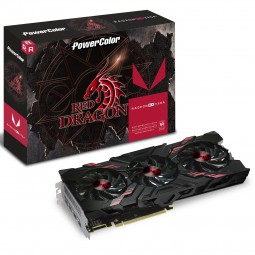Soldato
Prices for new cards are coming down and used ones are really dropping fast now. Last minute miners are panicking!
Dons Sith Hood..."Good, goooooood"
Please remember that any mention of competitors, hinting at competitors or offering to provide details of competitors will result in an account suspension. The full rules can be found under the 'Terms and Rules' link in the bottom right corner of your screen. Just don't mention competitors in any way, shape or form and you'll be OK.
Prices for new cards are coming down and used ones are really dropping fast now. Last minute miners are panicking!
Prices for new cards are coming down and used ones are really dropping fast now. Last minute miners are panicking!
In an ideal world AMD, Intel and Nvidia would all be competing at the high end. It would be great for the consumer. I do think AMD can gain market share through their mobile business, plus switching to the 7nm process can only help too. It'll take time, but it can be done.
Also, if stock wasn't an issue, AMD should've had a price structure like the following: 480/580 - £150 / Vega 56 - £300 / Vega 64 - £400. For me this what the price of these GPU's should be (same goes for the Nvidia equivalents) rather than the price what they launched at, even before the mining/memory situation the cards were already overpriced.
If AMD are serious about gaining market share within the Desktop market, they need to price their GPU's realistically, rather than compete with Nvidia by pricing their GPU's at the same level.
As Anandtech once stated: There are no bad GPU's, just bad prices.
Attempting to shed some light upon the situation....why are we talking about bulbs in a thread about GPU pricing?
Attempting to shed some light upon the situation.
got to filament it with something....why are we talking about bulbs in a thread about GPU pricing?

A card doing ETH mining is actually not been worked that hard, it can use less than half the power used when gaming, and can be run at around half the power limit depending on the binning of the card. So it does depend on what is been mined.
I think the point was you used an analogy you didn't quite understand and ended up saying the opposite to what you wanted.I really am not getting your point here.
I think the point was you used an analogy you didn't quite understand and ended up saying the opposite to what you wanted.
Well it kind of is, you posted an analogy, he pointed out the flaw in it, you got upset.Not at all the case
Well it kind of is, you posted an analogy, he pointed out the flaw in it, you got upset.

No he didn't, perhaps you didn't read the thread properly?He ignored the point because it was valid
He ignored the point because it was valid, and pursued what he thought was a flaw because he didn’t have anything else to move forward with.
The point was regarding mean time to failure; nearly every mass produced product and component has an estimated mean time to, or between, failures.
I presented the bulb because I thought it would be simple enough to follow, evidently I should have used something even simpler.
Here’s a link that might be enlightening, shall we not derail any further now?
http://www.radio-electronics.com/in...-diodes/lifespan-lifetime-expectancy-mtbf.php

